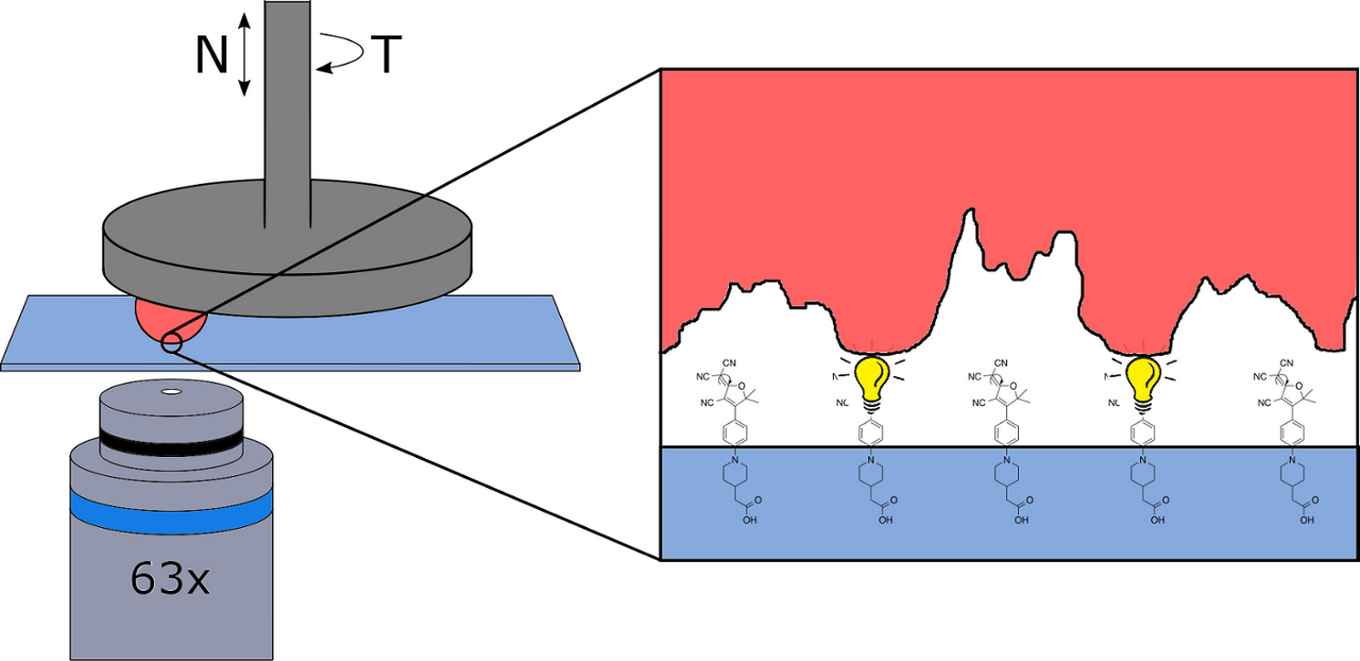Luminescent molecules help reveal new insights in friction
Da Vinci revisited
4 March 2018

Friction is responsible for about twenty per cent of world energy consumption. The main reason for this is that frictional forces slow down the motion of surfaces in contact: think of the moving parts in a car engine. Over five hundred years ago, Leonardo da Vinci was the first person to study friction systematically. Da Vinci’s main result is still used today by many engineers: friction is proportional to the normal force. That is: when two objects are pressed together twice as hard, the friction also doubles. Researchers of the UvA Institute of Physics, the UvA Van ’t Hoff Institute for Molecular Sciences, the MicroTribology Center µTC in Freiburg and the Karlsruhe Institute of Technology have now studied this proportionality between friction and normal force more closely, using molecules that luminesce under pressure.
Surface roughness
In understanding friction, the concept of surface roughness plays a crucial role. On a molecular scale, almost all surfaces are rough: from nearby, such a surface looks like a mountainous landscape. Friction only arises at the locations where the highest hilltops on the two sliding surfaces touch one another.
To study this process in detail, the researchers designed a model experiment where a rough spherical surface was put into contact with a flat glass surface. The special feature of this experiment was that a single layer of contact-sensitive dye molecules was added to the glass surface. These molecules emit fluorescent light when pressure is applied to them. This allowed the researchers to very precisely map out where the rough spherical surface touched the flat glass surface and how the contact changed when more pressure was applied.

When a larger normal force (pressure) is applied, the ‘hilltops’ on the spherical surface are flattened more, resulting in a larger contact area between the sphere and the glass plate. The usual interpretation of Da Vinci’s proportionality between friction and normal force is that both forces are proportional to this contact area: applying twice the pressure results in twice the contact area, and therefore in twice the friction. Several theories predict the relation between contact area and normal force, but so far these theories could not be tested with high precision. The researchers now show that the existing theories fall short: friction is proportional to the area of contact, as expected, but the contact area turns out not to be proportional to the normal force.
New models
The research results show that a better understanding of friction requires changes in the existing models, so that the measured relation between contact area and normal force can be reproduced. The results have been published this week in Nature Communications.
Reference
Molecular probes reveal deviations from Amontons’ law in multi-asperity frictional contacts, B. Weber, T. Suhina, T. Junge, L. Pastewka, A. M. Brouwer and D. Bonn, Nature Communications volume 9, Article number: 888 (2018)